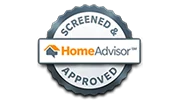How to identify stinging insects and what to do if they are on your property

Types of stinging insects
A stinging insect is a small six-legged invertebrate such as a bee, wasp or ant that has a stinger for defense and uses it when threatened. Stinging insects are put into three categories, apids (bumblebees and honeybees), vespids (wasps, hornets and yellowjackets) and ants (stinging and fire ants). There are 78 known species of stinging insects and the most common in Virginia are bees, wasps, hornets, yellowjackets and fire ants. Stinging insects tend to be more aggressive in the fall season and are always incredibly protective of their nests. The most aggressive species of stinging insects are Africanized killer bees, yellowjackets and paper wasps. Social stinging insects or insects that build hives or nests and work and live together tend to be more likely to sting. Solitary stinging insects or insects that live, work and build their nests independently tend to be less likely to sting. There are species of social and solitary ants, wasps and bees. One example of a social bee is a honey bee. One example of a solitary bee is a carpenter bee.
Types of stings
Stinging insects possess stingers or sharp organs at the end of their bodies and use them to pierce a surface and inject venom. Some stinging insects are venomous while others are non-venomous. Stings regardless of whether they are venomous or non-venomous will cause redness, temporary pain and occasionally swelling. Some stings are more severe and can be life threatening depending on the location of the sting and if the person is allergic to the stinging insect’s venom. The most severe reaction to the sting is called anaphylaxis and can cause shortness of breath, swelling of the tongue and mouth, nausea, vomiting, a rash and if not treated quickly, death. Stings can be extremely painful and there is a pain index called the Schmidt sting pain index that is a scale rating that categorizes the most painful stings caused by stinging insects. Pain level one on this scale is the least painful and while pain level four is the most extreme and painful of stings. An example of a level one sting is a southern fire ant and an example of a level four sting is a bullet ant. Stinging insects can sting other insects, animals and people. Stinging insects with the exception of honey bees can sting multiple times without dying and all stinging bees are female.
Where are stinging insects found?
Some stinging insects build their nests or hives near people’s homes in trees or shrubs while some will build their nests on the property in places such as attics, sheds, porches, tops of windows or door frames or eaves of garages or roofs. Stinging insects build their nests or hives both above and below ground depending on the species. Yellowjackets build their nests in the ground under carpenter bees make their nests in untreated wooden structures such as fences or decks made of pine or cedar. It can be dangerous to live around stinging insects because they not only are a nuisance, but there is no way to determine if they feel threatened or if they might sting or not.
What can be done to protect yourself from stinging insects
One preventative measure for stinging insects is to make sure the property is clean and windows and doors are closed. Removing trash often and keeping trash cans covered may help in limiting the amount of the insects, especially yellowjackets. Small cracks and crevices in the home should be repaired to prevent the insects from coming in and building their nest. Another suggestion is to avoid planting flowering plants in the garden. Many stinging insects are attracted to flowering plants. Alternatively, there are certain plants that deter or repel some species of insects. Stinging insect deterrent plants include mint, lemongrass, citronella, rosemary and sage. Carnivorous plants like Venus flytraps, pitcher plants and sundews have a diet consisting of various insects and can effectively reduce the population of a variety of species of bees, hornets and wasps.
What damage can stinging insects cause to homes?
Carpenter bees, while less likely to sting people are more likely to cause structural damage to your property. Carpenter bees drill holes into wood and make tunnels in which they build their hives. This process weakens the wood and can even destroy it. Nests and hives leave residue and staining when removed and parts of the home where the hives or nests were may need to be repainted, repaired or replaced depending on the location and severity of the damage. While home damage is not the main concern with stinging insects, it is important to understand that there may be damage ranging from small and insignificant to more invasive or extensive damage that might be more expensive to repair.
How to differentiate between stinging and non-stinging insects
It can be difficult to know which insects sting and which ones do not, especially since some only sting occasionally while others never sting. There are thousands of subspecies of some stinging insects like wasps, with over 30,000 types of wasps. Pest control specialists are skilled in identifying stinging insects and should be contacted for an inspection of the property to ensure there are no infestations of stinging insects that may potentially cause harm to the residents. It is important to never attempt to remove a stinging insect nest or hive or attempt to get rid of the stinging insects themselves on your own and to instead hire a professional pest control service.
What does the inspection process look like?
When you schedule an estimate with Summit, a pest control specialist will come to your property to do an inspection of the problem. They will locate the nest or hive and determine the best possible solution for the problem moving forward. The removal process will look different depending on the species of the stinging insect, the quantity of insects and the location of the nest or hive. Once the insects are taken care of and the nest or hive is removed, the technician will clean the affected area and spray a residual material to ensure the stinging insects do not return to make a new nest or hive in the same location. For more information about stinging insect removal or to schedule your free estimate contact us.












